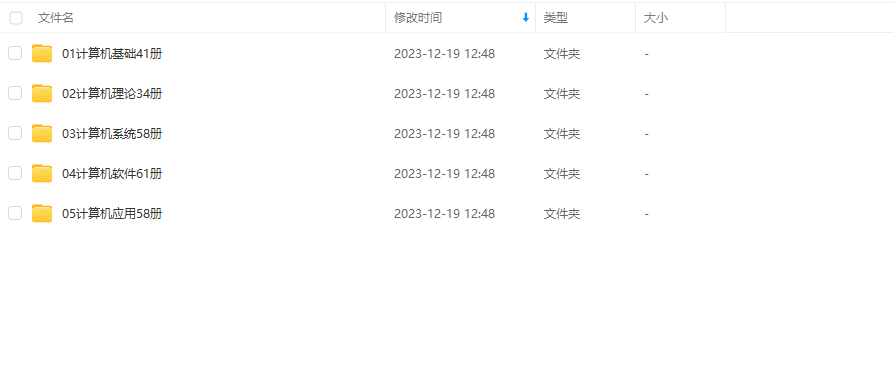大家好,我是大头,职高毕业,现在大厂资深开发,前上市公司架构师,管理过10人团队!
关注我发送“MySQL知识图谱”领取完整的MySQL学习路线。
用户状态(UserStatus) 和 用户类型(UserType) 应该如何在领域模型中表达? 这是一个很有代表性的建模问题:用户状态(UserStatus) 和 用户类型(UserType) 应该如何在领域模型中表达?
✅ 最佳实践结论(DDD 建模角度):
✅ 建议建模为单独的值对象(Value Object),而不是直接使用 Integer 类型。
接下来分析一下为什么
✅ 原因分析:为什么不用普通的 Integer?
问题
使用 Integer 的弊端
可读性差
status == 1 到底代表啥?新手难以理解
安全性差
任何地方都可以传入不合法值,如 status = 999
违反封装
User 实体暴露了状态内部的具体编码实现
业务语义不明确
Integer 不能表达“启用/冻结/注销”等领域含义
✅ 为什么用值对象更合适?
在 DDD 中,值对象(Value Object)是具有领域语义但无身份标识的对象,适合表达用户的“状态”、“类型”、“级别”等固定枚举值的场景。
它能提供:
✅ 明确的领域语言(如:UserStatus.ACTIVE、UserType.ADMIN)
将用户状态设置为值对象以后,我们能明确的表达状态的含义,是正常、冻结还是封禁等等。且避免了非法值。并且如果要变更的话,是变更整个值对象。
在领域建模中,你可以一下子明白这个实体中这个值的含义。
在DDD中,不要使用传统的数据建模思想,而是要使用领域建模思想。
传统的数据建模思想的话,用户状态存储在数据库中通常都是1,2,3,4这样的Int值。
所以实体中一般也直接使用Int类型的值作为存储。
而领域建模思想则强调将真实世界中的业务映射成领域模型。数据库仅仅是领域模型持久化的一个地方而已。
✅ 示例:建模用户状态为值对象
1 2 3 4 5 6 7 8 9 10 11 12 13 14 15 16 17 18 19 20 21 22 23 24 25 26 27 28 29 30 31 32 33 34 35 36 37 38 39 40 41 42 43 44 45 46 package com.example.accountbook.domain.model.user;import java.util.Objects;public class UserStatus { private final int code; public static final UserStatus ACTIVE = new UserStatus (1 ); public static final UserStatus FROZEN = new UserStatus (2 ); public static final UserStatus DELETED = new UserStatus (3 ); private UserStatus (int code) { this .code = code; } public static UserStatus of (int code) { return switch (code) { case 1 -> ACTIVE; case 2 -> FROZEN; case 3 -> DELETED; default -> throw new IllegalArgumentException ("非法用户状态: " + code); }; } public boolean isActive () { return this = = ACTIVE; } public int getCode () { return code; } @Override public boolean equals (Object o) { return (o instanceof UserStatus that) && this .code == that.code; } @Override public int hashCode () { return Objects.hash(code); } }
聚合中使用值对象
1 2 3 4 5 6 7 8 9 10 public class User { private Long id; private String username; private String passwordHash; private UserStatus status; private UserType type; }
用 enum 枚举 + 值对象混合的高级方案 一般来说,用户状态和用户类型,我们都会创建一个枚举类。因此我们可以使用枚举+值对象的方式来重新构建一下用户状态。
我们现在深入 DDD 实践:用 Enum 枚举 + 值对象(Value Object)混合建模方式 表达如用户状态 / 用户类型,并展示如何在 MyBatis 中映射为字段、在 Repository 中自动转换为领域值对象。
✅ 为什么用「Enum + 值对象」组合建模?
对象类型
作用
enum表达离散枚举值(常量集合)
Value Object表达领域语义 + 方法(如 isActive())
🌟 组合起来,既有类型安全、又有语义表达、也便于持久化。
✅ 枚举类:UserStatusEnum
1 2 3 4 5 6 7 8 9 10 11 12 13 14 15 16 17 18 19 20 21 22 23 24 public enum UserStatusEnum { ACTIVE(1 , "启用" ), FROZEN(2 , "冻结" ), DELETED(3 , "注销" ); private final int code; private final String label; UserStatusEnum(int code, String label) { this .code = code; this .label = label; } public int getCode () { return code; } public static UserStatusEnum fromCode (int code) { for (UserStatusEnum status : values()) { if (status.code == code) return status; } throw new IllegalArgumentException ("未知状态: " + code); } }
✅ 值对象:UserStatus
1 2 3 4 5 6 7 8 9 10 11 12 13 14 15 16 17 18 19 20 21 22 23 24 25 26 27 28 29 30 31 32 33 34 35 36 37 38 39 40 41 42 43 public class UserStatus { private final UserStatusEnum status; private UserStatus (UserStatusEnum status) { this .status = status; } public static UserStatus of (UserStatusEnum status) { return new UserStatus (status); } public static UserStatus of (int code) { return new UserStatus (UserStatusEnum.fromCode(code)); } public boolean isActive () { return this .status == UserStatusEnum.ACTIVE; } public int getCode () { return this .status.getCode(); } public String getLabel () { return this .status.name(); } public UserStatusEnum getStatusEnum () { return this .status; } @Override public boolean equals (Object o) { return (o instanceof UserStatus that) && this .status == that.status; } @Override public int hashCode () { return status.hashCode(); } }
✅ MyBatis 持久化对象(PO):UserPO
1 2 3 4 5 6 7 8 public class UserPO { private Long id; private String username; private String passwordHash; private Integer status; }
✅ Mapper XML 映射
1 2 3 4 5 6 7 <mapper namespace ="com.example.repository.mybatis.UserMapper" > <select id ="selectByUsername" resultType ="com.example.repository.mybatis.UserPO" > SELECT id, username, password_hash, status FROM users WHERE username = #{username} </select > </mapper >
✅ 5. 仓储实现:UserRepositoryImpl → 转换 PO → 聚合
1 2 3 4 5 6 7 8 9 10 11 12 13 14 15 16 17 18 19 20 21 22 23 24 25 @Repository public class UserRepositoryImpl implements UserRepository { private final UserMapper mapper; public UserRepositoryImpl (UserMapper mapper) { this .mapper = mapper; } @Override public Optional<User> findByUsername (String username) { UserPO userPO = mapper.selectByUsername(username); return Optional.ofNullable(userPO).map(this ::toEntity); } private User toEntity (UserPO doObj) { return new User ( doObj.getId(), doObj.getUsername(), doObj.getPasswordHash(), UserStatus.of(doObj.getStatus()) ); } }
✅ 领域聚合实体:User
1 2 3 4 5 6 7 8 9 10 11 12 13 14 15 16 17 18 19 20 21 22 23 24 25 26 27 28 public class User { private Long id; private String username; private String passwordHash; private UserStatus status; public User (Long id, String username, String passwordHash, UserStatus status) { this .id = id; this .username = username; this .passwordHash = passwordHash; this .status = status; } public boolean canLogin () { return status.isActive(); } public int getStatusCode () { return status.getCode(); } public String getStatusLabel () { return status.getLabel(); } }
✅ 保存数据时:实体 → PO
1 2 3 4 5 6 UserPO userPO = new UserPO ();userPO.setId(user.getId()); userPO.setUsername(user.getUsername()); userPO.setPasswordHash(user.getPasswordHash()); userPO.setStatus(user.getStatus().getCode());
✅ 总结对比
项
IntegerenumValue Object + enum ✅ 推荐
类型安全
❌
✅
✅
语义表达力
❌
⚠️ 限
✅
是否可添加行为
❌
⚠️(有限)
✅(如 canLogin())
可维护性
差
一般
高
文末福利
关注我发送“MySQL知识图谱”领取完整的MySQL学习路线。



